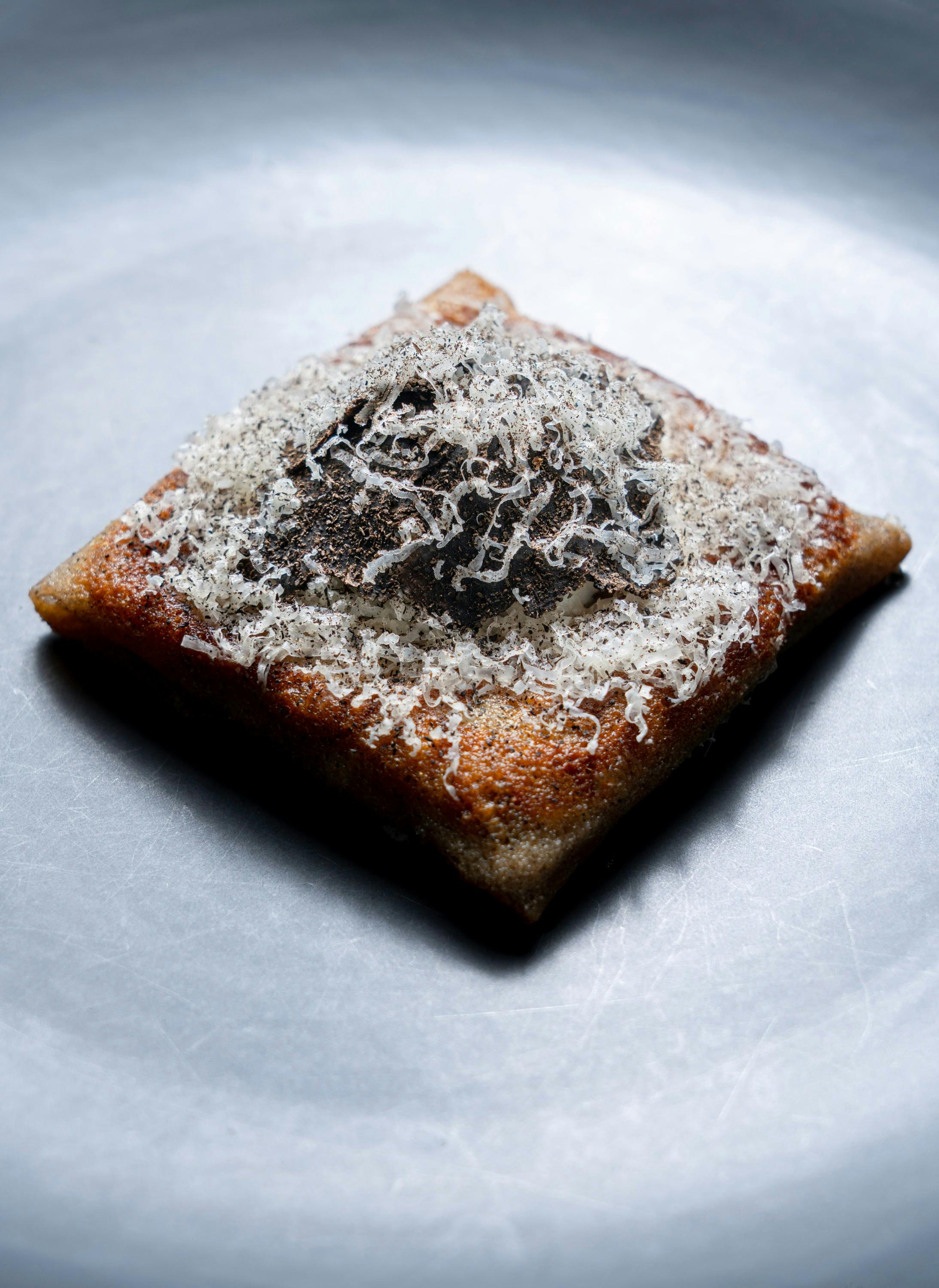Yves Le Lay’s Black Winter Truffle-topped Galette
Yves Le Lay’s take on the Breton galette elevates the dish from a simple staple to a decadent delight, without sacrificing its integrity.
Words by Sophie Miskiw. Photography by Johan Ståhlberg.
A casual glance at Yves Le Lay’s black winter truffle-topped galette would give away few clues about the dish’s humble origins. But beneath the frills an unfussy galette it is, albeit with the French-Danish chef’s decadent twist. It’s a dish close to Le Lay’s heart and while he has unquestionably made it his own, he is still careful to respect the heritage of the French classic.
“This dish is personal to me,” says Le Lay, Chef de Cuisine at À Terre restaurant in Copenhagen. “My father was from Brittany in Northwestern France. The region is famous for artichokes, everything seafood, cider, but also buckwheat. Buckwheat pancakes, or galettes, are a local delicacy. It was one of my favourite meals as a kid and so I thought: ‘Okay, how can we lift this from a humble everyday dish to being a bit more gourmet without losing its integrity?’”
Traditionally filled with a combination of cheese, egg and ham, the Breton galette dates back to the 15th century when Duchess Anne of Brittany first ensured the widespread cultivation of buckwheat. Despite its name, buckwheat is not in fact a wheat but a fruit seed related to rhubarb which produces a seed crop just 100 days after sowing. Originally known as a gale or ‘flat cake’, the galette has been a staple food in the region for over 500 years - at times consumed more widely than bread. It has an earthy nuttiness not found in other pancakes, and is typically paired with a chilled glass of cider.
It’s versatile, explains Le Lay, easily customised and gluten-free so suitable for guests who can’t eat wheat-based pancakes such as crepes, another French classic.
“The pancake acts as a canvas,” he says. “The possibilities are endless for what you could put into it. With this dish I have, in a way, tried to bring the galette into the 21st century.”
“At first this wasn’t intended as a vegetarian dish, but once you use these ingredients - especially the cep mushrooms which are so meaty and packed with umami - you don’t actually need any meat,” says Le Lay.
Filled with cep mushrooms à la crème, mounted with a tempered egg yolk and sprinkled with a grating of Beaufort cheese and black winter truffles, Le Lay elevates the dish whilst staying largely faithful to its Breton soul. And with all that creamy, cheesy, savoury richness, you’d be forgiven for not realising that the dish is, in fact, meat-free.
“At first this wasn’t intended as a vegetarian dish, but once you use these ingredients - especially the cep mushrooms which are so meaty and packed with umami - you don’t actually need any meat,” says Le Lay.
While the classic Breton galette remains a staple in Brittany, Le Lay’s take on the dish has become a long-standing staple on his own menus. He’s been making it for several years now and while he doesn’t rule out new variations, he believes he’s really “nailed it” with this combination of ingredients.
“It ticks all the boxes. It has everything you would want in a dish; the runny yolk works like a sauce. I think when people cut into it, they’re a bit surprised because we hide the yolk with truffle and cheese. And it triggers all those umami notes that people like when they have a dish with meat.”
It’s been 12 years since his father passed away, but this dish continues to pay homage to the food of Le Lay’s childhood, his French roots and, above all, his father himself.
“If he was here I’m pretty sure he would love it and that he would be proud I take part of his heritage into my cuisine.”
Words by Sophie Miskiw. Photography by Johan Ståhlberg.
